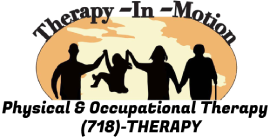
Revolutionizing Treatment: The Innovative Stroke Rehabilitation Device
By: ILH Startup Editor

In healthcare innovation, the stroke treatment device stands out as a game-changer. Stroke, a leading cause of disability and death worldwide, has long been a formidable medical challenge. However, with advances in medical technology, the stroke rehabilitation device has emerged as a beacon of hope.
This blog post will explore the world of stroke and cerebrovascular attack treatment devices, their mechanisms, benefits, and their transformative impact on stroke care.
Before discussing special tools for stroke recovery, let’s understand what a stroke is. A stroke happens when something goes wrong with the blood flow in the brain, like a “brain attack.” Devices that stimulate the brain can be beneficial for getting better after a stroke.
It can happen due to a blood clot blocking an artery (ischemic stroke occurs when this clot forms) or the rupture of a blood vessel (hemorrhagic stroke occurs when this happens). Hemorrhagic stroke occurs when there is bleeding in the brain. The consequences can be devastating, ranging from partial paralysis to cognitive impairments or, in severe cases, loss of life.
Stroke, which can result from different causes, is a serious medical condition. Ischemic Stroke occurs when a blood clot blocks an artery; while a Hemorrhagic stroke occurs when a blood vessel ruptures. These strokes can have devastating consequences, from partial paralysis to cognitive impairments, and in severe cases, they can be fatal.
Traditionally, stroke treatment has focused on two primary approaches: medication and rehabilitation. Medications like tissue plasminogen activator (tPA) are used to dissolve blood clots in ischemic strokes, which can help lower blood pressure in these cases. However, their effectiveness is time-sensitive, often requiring administration within a narrow window after symptoms appear.
On the other hand, rehabilitation helps stroke survivors regain lost functions through physical, occupational, and speech therapy.

Enhancing Recovery: Adaptive Devices for Stroke Patients
The stroke treatment device is a breakthrough in stroke care, particularly as an adaptive device for stroke patients. Unlike conventional treatments, it offers a novel approach that targets the root cause of the problem with remarkable precision. These devices can be broadly categorized into clot retrieval devices and neurostimulation devices.
Clot retrieval and stroke rehabilitation devices are unique innovations in treating cerebrovascular attacks. A blood clot generally causes ischemic stroke. Clot retrieval devices physically remove the blood clot causing the blockage, restoring blood flow to the affected brain tissue, while stroke rehabilitation devices aid recovery.
These devices are typically inserted through a minimally invasive procedure and are guided to the clot site using advanced imaging technology, serving as essential tools for stroke recovery. Once in position, they utilize a variety of mechanisms to capture and remove the clot.
Neurostimulation devices help stroke patients get better. They use advanced tech to wake up certain parts of the brain or nerves to help people regain lost abilities. Some are not invasive, like TMS (transcranial magnetic stimulation), while others are put inside the body, like DBS (Deep brain stimulation).
Stroke treatment devices, including adaptive devices for stroke patients, offer numerous advantages over traditional treatment methods. First is their speed; clot retrieval devices can swiftly reopen blocked arteries, potentially saving precious brain tissue.
The new tools for helping stroke patients have changed how we care for people who have had strokes. These tools make it much better for stroke patients to survive and get better. Hospitals all around the world are using these tools to make their stroke care better.

Stroke Rehabilitation Devices: Innovation in Stroke Care
Stroke treatment devices are like super cool tools in the medical world. People who make them keep working together to make them even better. It means they’ll become cheaper, easier to find, and help more people recover after a stroke.
The future looks promising for adaptive devices for stroke patients and their treatment. With advancements in artificial intelligence (AI) and machine learning, these devices are becoming more intelligent and efficient. They will be better equipped to identify stroke symptoms, recommend treatment approaches, and provide real-time feedback to healthcare providers.
One of the aspects of stroke treatment devices, which are essential tools for stroke recovery, is hearing the stories of patients who have benefited from them. These devices have given individuals a second chance at life, allowing them to regain lost functions and independence.
In conclusion, stroke treatment devices are a significant healthcare innovation, promising improved stroke care by restoring blood flow and aiding recovery. They bring hope to patients and healthcare professionals.
As technology advances, we can only expect further refinements and broader accessibility of these transformative tools, ushering in a new era of stroke care. Stroke treatment devices, including adaptive devices for stroke patients, are not just devices; they are lifelines for those affected by this devastating condition.
We can provide valuable information about the latest stroke treatment devices that can complement your rehabilitation journey. Contact us to learn more about our home physical therapy service and book a consultation to start working on your custom-made plans.



